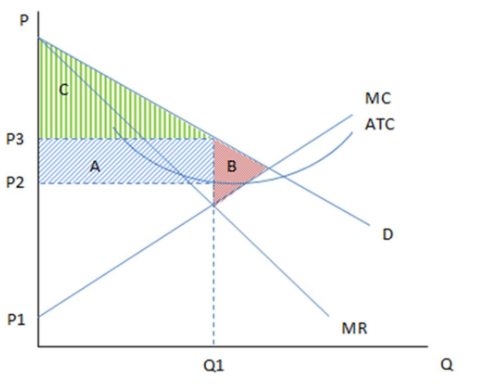A deadweight loss of consumer and/or producer surplus occurs when
a. producers fail to maximize profits.
b. mutually beneficial transactions cannot be completed.
c. consumers do not maximize their utility.
d. the price of inputs increases.
b
You might also like to view...
If a product exhibits increasing returns to scale, then the average cost of making the product will ______ as its production decreases?
a. increase. b. decrease. c. remain the same. d. there is insufficient information provided to answer the question.
According to the graph shown, area C represents:
These are the cost and revenue curves associated with a monopolistically competitive firm.

A. producer surplus.
B. consumer surplus.
C. deadweight loss.
D. profits.
The principal goal of the Treaty of Maastricht was the creation of a
a. fixed exchange rate system. b. floating exchange rate system. c. gold-exchange system. d. monetary union.
Suppose that the government sets a maximum price for milk at $5 a gallon and the equilibrium price of a gallon is $3. How much quantity traded will this maximum price lead to?
A. the equilibrium quantity B. below the equilibrium quantity C. above the equilibrium quantity D. There is not sufficient information.